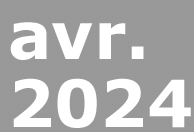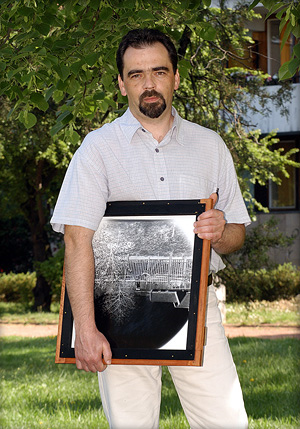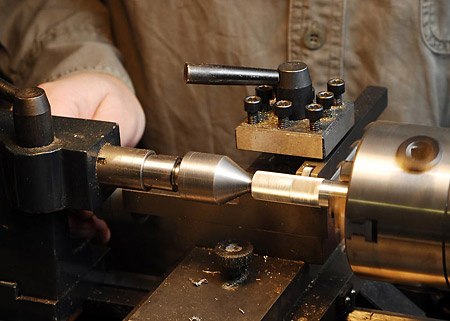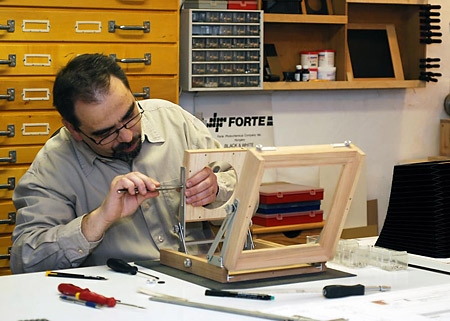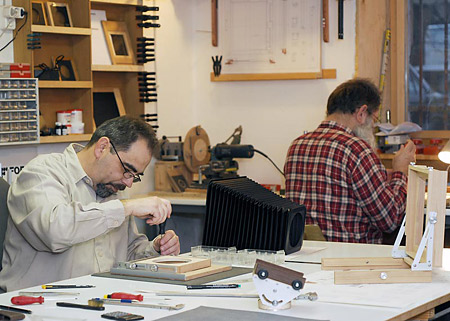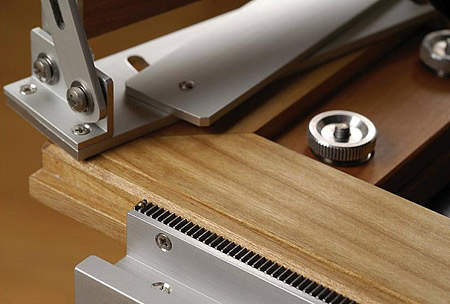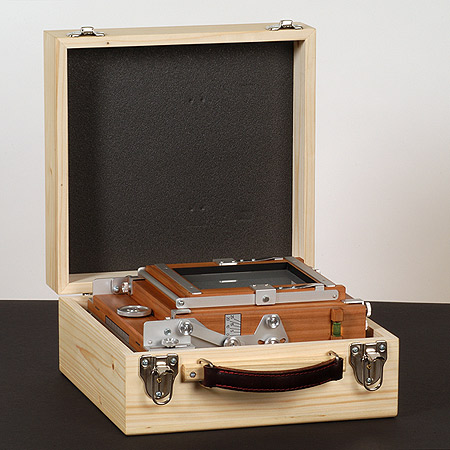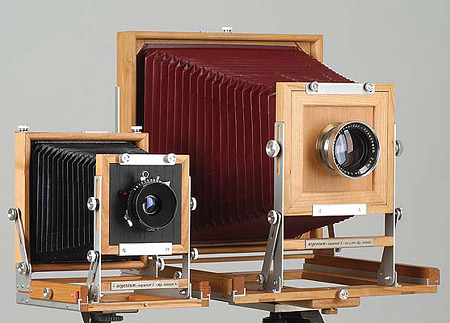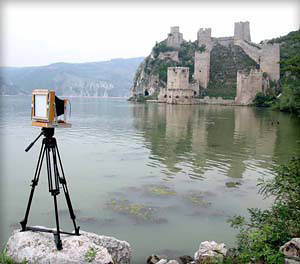|
|
|||||||||||||||||||||||||||
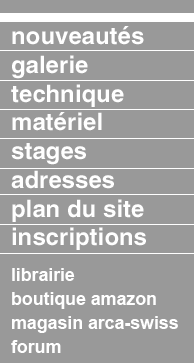
l'interviewé
http://www.argentumcamera.com/
|
Argentuminterview by Thierry Rebours
István Soltész you're the founding manager of Argentum, which is not yet known in France (La Boutique de Galerie-Photo retails them for a couple of months). Why Argentum, and could you browse his history? Argentum is a Latin word for silver. For today, silver means tradition and handicraft in photography, which are very important for me. Moreover, it sounds good, and I believe that this Latin word is pleasant not only for the Hungarian ear, but for anyone. The name of different types of argentum cameras also come from Latin, such as excursor, which means a walking, hiking man, or such as explorator, which refers to traveling, to discovery. It was fifteen years ago, when I built my first camera for myself. I wanted to make photos with a big size camera. This goal motivated me. Of course, the technical difficulties of making a camera also inspired me, but the desire for photographing has been as strong inside of me until today, as my technical interest. I enjoy every stage of taking photos, which includes also building the camera I take the photos with. I make the cameras based on my technical skills, but at the same time also as an enthusiastic photographer. Of course, I was not satisfied with my first camera at all, so it was followed by many more, until I gained enough experience to undertake my first order. It was eight years ago. This was the time, when the first camera named argentum was finished and provided with a production number. I owe a lot of thanks to my first costumer. Since then, we have become good friends, and I have recently made for him his fourth argentum camera.
You currently work in Hungary. Is it easy to find fine and dry wood there? The primary stock of my cameras is cherry wood. We, Hungarians are lucky to have our ancestors having planted lots of wild cherry trees in the Hungarian forests, from which high quality wood can be exploited. I use wood material dried artificially, which is stored in appropriate conditions for at least one year before taking them to make a camera. Sometimes I happen to get a freshly cut trunk, so I can control how it is sawed, but this wood needs to be stored for many years, before it becomes a camera. I am also testing black nut wood, maybe I will make argentum cameras from this type of wood as well.
Congratulations, you still to have your ten fingers complete ! Oh, thank you! I do my best, since I need them all. It is in fact a dangerous work, and needs much concentration. I hope we can still make fun of this even after many years.
You're working in a fine wood craftsmanship, how did you learn this job ? I am very thankful for my high school teachers for this, where I met both high skilled engineers and true craftsmen. I graduated in a technical school on designing major. Though our basic field was designing, our teachers insisted that only those will make good designers, who also learn how to manufacture the designed product. This made it possible for me to get a very serious workshop practice. I could have an insight to all stages of manufacturing process; moreover those workshops were equipped of the most modern machine tools of that time. Later, I also finished a technical college, where I received mechanical engineering diploma. Of course, I had to get used to working with wood, when I started to make cameras. I had no experience of a joiner, but I have gained a lot in course of time. Maybe it is even better that I approached working with wood with the knowledge of a metal-worker. Joiners never use, for example, a caliper square, which is inevitable to work with 0.05mm accuracy, which is necessary when making cameras. To make a camera is a very complex work, which needs much knowledge and skills on many fields.
What part of the camera are you making by your self ? It might sound surprising, but I make almost every part of the camera. I must be familiar with making the metal and the wooden parts, and I make the bellows and concerning most of the cameras the ground glass as well. Some types of cameras have a few parts, that needs to be produced somewhere else, since I do not own the appropriate machine to make them, but these are minimal. Well, and of course the little tablets of the cameras are also engraved by another firm. I do my best to keep all parts of the production in my hands.
Your goal is to produce fine quality products, Maybe the secret is exactly what I referred to when answering the previous question, that is, to keep my eye on everything. And there is also another thing: I work only on one camera at once; I concentrate only on my current order. Besides this, high quality tools and machines are also necessary, and you can never say that you have enough of them. Sometimes I have to make the machine to be able to perform a special procedure for myself, since no manufacturer makes such machine that would be appropriate for my goals.
What is your manufacturing process? The first step is selecting the wood stock very carefully and process these parts to make the adequate profiles. These will make the well known elements of the camera. Meanwhile there are plenty of other works as well: jigging, shaving, biting, many-many cementations, and of course burnishing. This is followed by preparing the metal parts. After a certain stage these go parallelly. After a camera is assembled completely, and I have checked that everything works perfectly on it, I disassemble it to its parts again. This is a time for polishing the wooden elements, and to treat their surface. These treated parts need a rest of a couple of days, before putting the camera together again finally.
Customer has to wait a long time to get his order, currently more than one month, can you explain why ? Mentioning one month is an underestimation. I cannot save less the 250 working hours when making a camera that has a complex structure. Of what I have said so far, it is clear that there is no mass production in my workshop. Such type of customized handicraft excludes mass production.
How do you design a new model? How many time does it take from the concept to the working first camera? One could believe that it is enough to have a good idea once for all, and than everything goes all right. However, new ideas often come up, and if I can improve a camera, I will utilize the new ideas. This is the advantage of handicraft to mass production. In mass production it is very difficult to make a slight change in the process. Many times a camera is manufactured according to the customer’s special requests, and this time the whole process starts with engineering again. A new idea must be modeled before utilizing it finally. I’ve had many dreamless nights thinking hardly about how I could spare grams and millimeters.
Do you get inspired by competitors, and what are your "plus" ? I have gone on my own way from the beginning. Argentum is good evidence that it is possible to start along by a unique concept, and to create a new design on the field of large format cameras. Not all costumers need a camera having lots of specifications that might result in using a heavy and expensive camera. Moreover, it must be noted that the more specifications a camera has the less stability it will have. I have realized this and I undertake to make very simple cameras as well. I am very proud of type excursor that really is unique including the horizontal and square format and the film holder that is made for it. I, for example, have been photographing for many years with an 8x10 inch horizontal excursor camera, meanwhile many times I thought of others struggling with carrying around the same format camera being heavier than mine. There is a Hungarian idiom, which says “many times few might be more”.
How many work to produce a camera ? What is your staff ? At present our team includes three members. My friend, Peter Toth-Abri is a great help in the foreign correspondence, and he makes the English version of my brochures. Recently, the photos that have been taken of my cameras, are also his work. I need to say thanks to Tibor Babitz as well. He is making the contact printing frames, and the pinhole cameras and the film holders of argentum are also a work of both of us. The manufacturing of the cameras remains my job alone.
Why choose a Argentum camera ? Because it is a “high quality Hungarian product”. This tribute was given by a French customer by the way. I must say, I was very thankful for him, since such feedbacks strengthen me that I am on the right way. I make customized cameras. The range of the available types is wide, so my customers have a great opportunity to find the type of camera they need most.
What are your projects in the future ? I want to expend the range of choice. I have invested a lot of energy recently in developing the argentum ULF system. My motto here is also to make these cameras relatively small, light, easy to use and cheap. Besides this, I trust that soon argentum wooden tripods will also be available. There is something else which doesn’t relate closely to production. I am very curious of what photos my customers make with the cameras that are made by me. My big desire to publish an album containing photos only taken by argentum cameras.
What is Argentum market's place, between japaneses and american camera builders ? I would not like to be simply one manufacturer in the line. Of what has been said so far it is clear that argentum offers products that are missing from the product line of other manufacturers. As I notice, the customers pay attention to this, and grab the special possibility offered by me.
You spend a lot of your time to produce old fashioned and out-of-time cameras, are you optimistic about the future ? I don’t believe that what I do is old-fashioned. Argentum products are for the present. According to my experience there have never been so many fans of large photography than today. By the emergence of digital products the photography based on silver regained its original artisan feature, and I am very happy about it. Furthermore, I see a great possibility in combining the classical tools and digital imaging. So I am optimistic on this field.
Dernière mise à jour : 2009 |
||||||||||||||||||||||||||
|
|||||||||||||||||||||||||||

